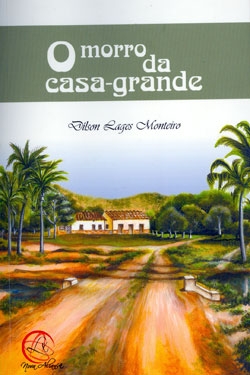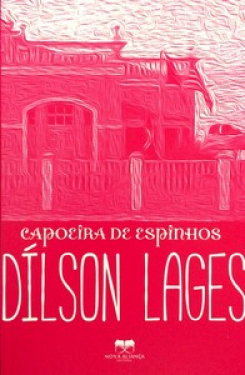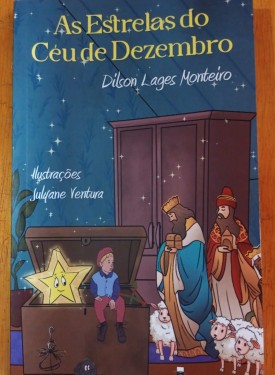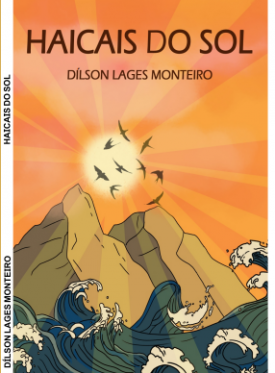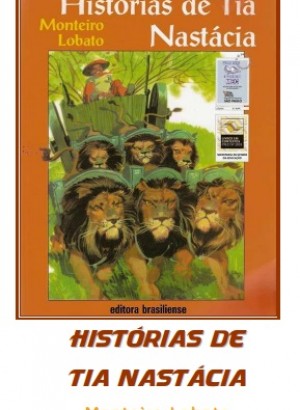[Flávio Bittencourt]
Artigo do Dr. A. Lankov sobre os mísseis nucleares de longo alcance da Coreia do Norte
"Quão perigoso é o programa nuclear norte-coreano?"
[http://www.123rf.com/photo_14915548_cyprus--circa-1970-a-stamp-printed-in-cyprus-shows-portrait-of-mohandas-karamchand-gandhi-1869-1948-.html,
Stock Photo - CYPRUS - CIRCA 1970: A stamp printed in Cyprus shows portrait of Mohandas Karamchand Gandhi (1869-1948), birth centenary, leader in India's struggle for independence]
COLONIALISMO: possivelmente no séc. XV, os índios caribe
venceram os antigos povoadores da ilha, os aruaque;
GRANADA FOI "DESCOBERTA" PELO ALMIRANTE C. COLOMBO (15.8.1498
[invasão do Novo Continente: 12.10.1492]) E RECEBEU DO REINO DA ESPANHA
O NOME DE CONCEPCIÓN; É ILHA CARIBENHA QUE, APÓS SER ESPANHOLA,
FOI POSSESSÃO FRANCESA E, DEPOIS, INGLESA (GRANADA OU GRENADA);
SELO POSTAL (relativamente) RARO COM A EFÍGIE DA RAINHA VITÓRIA:

(http://www.ebay.in/itm/Grenada-1863-SG-6a-Queen-Victoria-Used-Stamp-/160864054171)

(http://www.greenpeace.org/brasil/pt/Multimidia/Papeis-de-Parede/)
"O QUE ESTÁ HAVENDO COM AS 'MÍDIAS' BRASILEIRAS QUE
NÃO DIVULGAM ESSE ARTIGO DO DR. LANKOV? DÁ LICENÇA,
MAS ISSO É UMA VERGONHA!"
(Coluna "Recontando...")

(http://silviasaron.wordpress.com/2010/09/21/marina-silva-cresce-em-algumas-capitais/)

(http://ecossocialismooubarbarie.wordpress.com/2012/12/15/nao-a-energia-nuclear-no-brasil/)
SELOS POSTAIS COMEMORATIVOS
PELA PAZ, DE GRANADA OU GRENADA:

(http://www.ebay.com/sch/sis.html;jsessionid=BA96D85D5E6A99ECB11E28DFE9B27D88?_nkw=Grenada%20Mahatma%20Gandhi%20Luther%20King%20Set%20SC%201404%2005%20MNH&_itemId=200829131755)
UM "SELO-CARTUM":
"(...) Wow, I was looking at the GB Overprint Society pages online and came across this, and I literally jumped back a little!
What other stamps have you seen that astonished you?
Here it is, enjoy,
SueStamps (...)

[http://www.stampcommunity.org/topic.asp?TOPIC_ID=26574]
"POEMA DO EDITOR JOCENIR RIBEIRO,
CRIADO FINAL DOS ANOS 1970:
IN UNIVERSO
IN UNIVERSO
FORA DO VERSO
O DESESTRUTURAR
DITADURA NO AR
CAOS TÉRMICO
UNIVERSIDADE ADEUS"
OUTRO "SELO-CARTUM":
Sue Stamps asked "What other stamps have you seen that astonished you?"
This one struck me as being worthy of inclusion...
 This... and more are available for viewing at The World Of Hedley Adams Mobbs. Be amazed, amused and astonished.
This... and more are available for viewing at The World Of Hedley Adams Mobbs. Be amazed, amused and astonished.
[http://www.stampcommunity.org/topic.asp?TOPIC_ID=26574]
ZABRISKIE POINT [1970],
FILME DE M. ANTONIONI:
EXPLOSÃO (FOTO DE CENA):

(http://mosquiturquoise.blogspot.com.br/2012/03/zabriskie-point-1970.html)

(http://newshopper.sulekha.com/germany-nuclear-protest_photo_1636788.htm)
'DEUS, OLHE POR NÓS,
O POVO SIMPLES (mas limpo, radioativamente limpo)
QUE NÃO TEM NADA A VER COM ENERGIA NUCLEAR,
NEM COM MÍSSEIS NUCLEARES DE CURTO, MÉDIO NEM
LONGO ALCANCE"
(Coluna "Recontando estórias do domínio público")
Historic Anti-Nuclear Protest In Tokyo. June 29th 2012,
Youtube:
Publicado em 29/06/2012
I bring you another special report from Tokyo. The Ghost Letter Reports was on the scene for a Anti-Nuclear protest in central Tokyo which quickly grew from 60,000 to well over 150,000 people in a matter of several minutes. This is the first of several videos which GLR will upload on this event. Please spread far and wide. Break the media blackout.
SE VOSSA SENHORIA CONTAR COM TEMPO E DISPOSIÇÃO
PARA TANTO, LEIA, POR FAVOR, OS SEGUINTES LIVROS:
- Tania Malheiros: Brasil: a bomba oculta - O programa nuclear brasileiro, Editora: Gryphus, 1993, 164 páginas
- Antônio D. Machado e Ennio Candoti (coord.): Energia Nuclear e Sociedade - Um debate, Editora: Paz e Terra, 1980, 322 páginas,
- Gláucia Oliveira da Silva: Angra I e a melancolia de uma era - Um estudo sobre a construção social do risco, Editora: EdUFF, 1999, 284 páginas
(ESSE TÍTULOS CONSTAM NO SEGUINTE VERBETE DA WIKIPÉDIA:
http://pt.wikipedia.org/wiki/Energia_nuclear)
Blog de Rita Colaço -
18.9.2008:
Um segredo de Estado

Andrei Lankov é um professor russo que dá aulas na Universidade Kookmin, em Seul.
Entrevistei-o quando estive na Coreia do Sul, já que ele tem dedicado boa parte da sua vida académica a estudar esta delicada questão das Coreias.
Esta quarta-feira, o Asia Times Online publica um artigo muito interessante de Lankov: “Pyongyang defies all odds”.
Lankov sublinha, entre outras coisas, que a revolta só acontece quando o povo encontra alternativas mas explica porque é que a queda do regime norte-coreano é um caminho com mais pedregulhos do que os caminhos da libertação na Europa de Leste ou na União Soviética dos anos 70, do século XX.
Revoluções geralmente começam quando a elite dominante tardiamente tenta reformas pela metade e inconclusivas (admitindo assim que o sistema não é perfeito, não o suficiente para atender a população insatisfeita) ou os líderes mostram sinais de desunião. Na Coreia do Norte, nenhuma dessas condições é atendida. A elite está unida, na base a atividade social de qualquer tipo não é tolerada, alternativas para a existência atual são ainda desconhecidas para o público.
" (http://coreiadonorte.wordpress.com/tag/kookmin-university/)
(Prof. Dr. Andrei Lankov, da Universidade Kookmin [Seul, Coreia do Sul])
"(...) Bomba atômica
As bombas nucleares fundamentam-se na reação nuclear (i.e. fissão ou fusão nuclear) descontrolada e portanto explosiva.
A eficácia da bomba atômica baseia-se na grande quantidade de energia liberada e em sua toxicidade, que apresenta duas formas: radiação e substâncias emitidas (produtos finais da reação e materiais que foram expostos à radiação), ambas radioativas. A força da explosão é de 5 mil até 20 milhões de vezes maior, se comparada a explosivos químicos. A temperatura gerada em uma explosão termonuclear atinge de 10 até 15 milhões de graus Celsius no centro da explosão.
Na madrugada do dia 16 de julho de 1945, ocorreu o primeiro teste nuclear da história, realizado no deserto de Alamogordo, Novo México, o chamado Trinity test.
O segundo, empregado pela primeira vez para fins militares durante a Segunda Guerra Mundial, foi na cidade japonesa de Hiroshima e o terceiro, na cidade de Nagasaki. Essas explosões mataram ao todo cerca de 155.000 pessoas imediatamente, além de 110.000 pessoas que morrerem durante as semanas seguintes, em consequência dos efeitos da radioatividade. Além disso, suspeita-se que até hoje mais 400.000 morreram devido as efeitos de longo prazo da radioatividade.
As bombas termonucleares são ainda mais potentes e fundamentam-se em reações de fusão de hidrogênio ativadas por uma reação de fissão prévia. A bomba de fissão é o ignitor da bomba de fusão devido à elevada temperatura para iniciar o processo da fusão. (...)"
(http://pt.wikipedia.org/wiki/Energia_nuclear)
DO SUL]
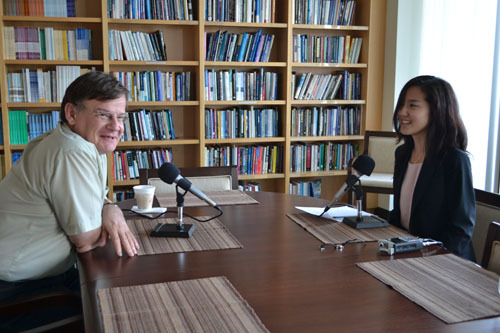
In this episode, Korea Economic Institute's Director of Public Affairs and Regional Issues Sarah Yun speaks with Dr. Andrei Lankov of Kookimin University. Having written a number of books on North Korea, and contributing to regular columns in the Asia Times, Korea Times and The Daily NK, Dr. Lankov is one of the leading voices on the DPRK. Hailing originally from Saint Petersburg (then Leningrad), Lankov has a unique background among Korea Watchers, having studied in North Korea during the 1980s and witnessed the breakup of his native Soviet Union in the early 1990s. In this interview, he talks to Sarah about his time living in North Korea, current prospects for inter-Korean relations, and how he remains motivated to work on the issue - despite a rather negative outlook for the future of the peninsula."
(http://keia.podbean.com/2011/09/26/andrei-lankov-kookmin-university/)
"(...) é pouco provável que a Coreia do Norte se atreva a assestar o primeiro golpe nuclear contra os EUA, o Japão ou a Coreia do Sul. (...)
Os altos dirigentes norte-coreanos não se propõem conquistar ou dominar o mundo. O desejo deles é muito mais modesto: preservar seu poder e seus privilégios.
No entanto, isto não quer dizer que o programa nuclear norte-coreano é inofensivo. Na verdade, traz uma ameaça real para a paz mundial. Primeiro, porque já estabeleceu um precedente perigoso. À diferença das três novas potências nucleares – Índia, Paquistão e Israel que nunca assinaram o Tratado de Não-Proliferação de Armas Nucleares de 1968 – os passos que está dando a Coreia do Norte aparentam muito duvidosos ou até mesmo pérfidos. Inicialmente Pyongyang assinou o TNP, aproveitando isso para obter acesso a tecnologias nucleares, e depois saíu unilateralmente dele. Se tal procedimento ficar impune, alguns outros países membros do Tratado de 1968, talvez, também não resistirão à tentação de seguir o exemplo da Coreia do Norte. (...)"
[Dr. Andrei Lankov, trecho do artigo adiante transcrito, na íntegra]
|
HAICAI DO DIA:
RESSUCITE DOUTOR
FABREGAT D'URUGUAI
PARA IR À ONU
(F. B.,
hoje)
DA DIPLOMACIA URUGUAIA (ANOS 40, 50 E 60),
UM AMIGO VERDADEIRO DO BRASIL E
DA AMAZÔNIA (ESCREVEU SOBRE O
RIO AMAZONAS, SITUANDO-O COMO
ESTRATÉGICO PARA A ECONOMIA E
AS RELAÇÕES DOS PAÍSES SULAMERICANOS):

(http://colnect.com/en/stamps/stamp/311493-Enrique_Rodriguez_Fabregat-Anniversaries_of_1998-Uruguay)
UM GÊNIO DA DIPLOMACIA SULAMERICANA CONVOCADO PARA DISCUTIR,
NA ONU, PROBLEMAS DELICADÍSSIMOS DA GUERRA FRIA, REVOLUÇÃO
HÚNGARA DE 1956 CONTRA A PREPOTÊNCIA SOVIÉTICA ETC.:
"[...] Background information on the UN [UNITED NATIONS, ONU] Special Committee on the Problem of Hungary
(taken from their official digital archive)
By adopting Resolution 1132/XI. on January 10, 1957, the United Nations General Assembly established the Special Committee on the Problem of Hungary for the purpose of investigating Hungary’s 1956 Revolution, the subsequent Soviet military intervention and the circumstances and events that led to the installation of a counter-revolutionary government under János Kádár. Five countries were asked to delegate members to the Committee. Australia was represented its Ambassador to The Philippines, K.C.O. Shann, Denmark named Alsing Andersen, an MP, while Ceylon, Tunisia and Uruguay delegated their permanent UN Representatives, R.S.S Gunewardene, Mongi Slim, and Enrique Rodriguez Fabregat, respectively. Since there were five members in the Committee, commentators sometimes referred to it as the Committee of Five.
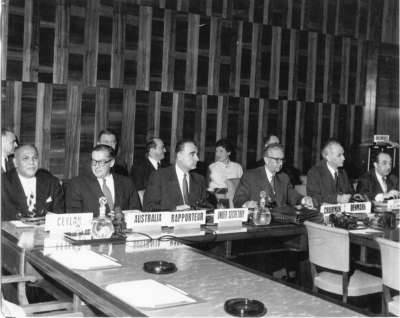
At its first session on January 17, 1957 the Committee elected Alsing Andersen as Chairman, and K.C.O. Shann as Rapporteur. UN Secretary-General Dag Hammarskjöld appointed William M. Jordan, then head of the UN Department dealing with political and Security Council matters, as principal secretary of the Committee – i.e. its operational chief – while naming the Danish diplomat Povl Bang-Jensen as Deputy Secretary. (In 1959 Bang-Jensen committed suicide under suspicious circumstances.) Claire de Héderváry became an advisor and chief assistant to the Committee, who coordinated its operations and also took part in the compilation of the Committee's Report. [...]
(http://libcom.org/history/united-nations-report-hungarian-uprising-1956, OS GRIFOS SÃO NOSSOS)
A DIPLOMACIA SULAMERICANA (URUGUAI) E
O FIM DO COLONIALISMO:

21 February 1967
Special Committee of 24 on the ending of colonialism, United Nations Headquarters, New York: Mr. John S. Malecela (Republic of Tanzania), Chairman of the Committee (left), conversing with Mr. Mateo Marques-Sere (Uruguay), during the Committee’s consideration of the situation of six Caribbean territories (Antigua, Dominica, Grenada, St. Kitts-Nevis-Anguilla, St. Lucia and St. Vincent).
(http://untreaty.un.org/cod/avl/ha/dicc/photo04.html,
|
O GRIFO É NOSSO)

(http://www.ebay.com/sch/sis.html;jsessionid=BA96D85D5E6A99ECB11E28DFE9B27D88?_nkw=Grenada%20Mahatma%20Gandhi%20Luther%20King%20Set%20SC%201404%2005%20MNH&_itemId=200829131755)
"O PROF. DR. A. LANKOV ESTÁ CERTÍSSIMO: DIFICILMENTE A COREIA DO NORTE VAI
AGREDIR OS EUA, O JAPÃO, A RÚSSIA OU A SUA AMIGA CHINA, MAS O PROBLEMA -
O GRANDE PROBLEMA - É A POSSIBILIDADE, com a devida vênia, DE O DOUTOR NÃO
ESTAR TÃO EXATAMENTE CORRETO, ASSIM, E - AFASTE DE TODOS NÓS ESSA CHANCE,
MEU PADRINHO PADRE CÍCERO ROMÃO BATISTA! - A COREIA DO NORTE ASSESTAR
[MIRAR] O TAL MÍSSIL ATÔMICO PARA UMA CIDADE DE PAÍS VIZINHO-INIMIGO
(POR EXEMPLO, DA COREIA DO SUL [onde está, aliás, aquele estudioso russo...]) E
DISPARAR O 'ARTEFATO' PERIGOSO, CARAMBA!..."
(Coluna "Recontando...")
"AGORA, COREIA NÃO TEM MAIS ACENTO AGUDO NO 'E':
COREIA DO NORTE NÃO TEM ACENTO, MAS TEM A
ASSUSTADORA BOMBA ATÔMICA"
(IDEM)
"(...) Segurança
A Agência Internacional de Energia Atómica alertou que terroristas poderiam vir a comprar resíduos radioativos, por exemplo de países da ex-URSS ou de países com ditaduras que usam tecnologias nucleares, tais como Irã ou Coreia do Norte, e construir uma chamada "bomba suja".
O quão fácil é desviar materiais altamente radioativos é demonstrado pelo exemplo do acidente radiológico de Goiânia, no Brasil em 1987, onde uma cápsula contendo Césio-137 foi encontrada por moradores em um lixão, contida dentro de uma máquina hospitalar em um hospital abandonado.[16]
Uma usina nuclear, justamente por lidar com algo potencialmente perigoso e que já resultou em acidentes no passado, tem normas de segurança tanto nacionais quanto internacionas que garantem que cada procedimento seja feito de acordo com todos os padrões de segurança. A Agência Internacional de Energia Atômica é um orgão internacional regulatório que salva-guarda a construção e uso da energia nuclear no mundo. Os requisitos para a obtenção de salva-guarda são severos e reconhecidos pela exigência em relação à segurança e operação de usinas nucleares; sem uma salva-guarda, um país é proibido de realizar a construção de instalações nucleares. Um dos requisitos para a obtenção de salva-guarda é que a instalação em questão deve ser supervisionada durante toda a sua existência por um grupo internacional de supervisores especializados em segurança radiológica e nuclear.
Gases de estufa
Os insumos necessários e auxiliares à produção da energia nuclear, como a fabricação de recipientes próprios e refinamento do combustível nuclear, ou seja, para operacionalizá-la de forma geral, leva a uma consequente produção de gases de estufa entre 3 e 6 vezes maior comparada com a energia hídrica e eólica. (...)"
HOMENAGEANDO, IN MEMORIAM, GANDHI E
LUTHER KING - E, DESEJANDO-LHES MUITA SAÚDE,
VITÓRIAS ELEITORAIS E ALEGRIAS, PARA A SENADORA
MARINA SILVA E OS DEPUTADOS FEDERAIS
JOSÉ SARNEY FILHO (ZEQUINHA SARNEY)
E FERNANDO GABEIRA,
EM QUEM DEPOSITO A MINHA CONFIANÇA E O MEU VOTO, NAS ELEIÇÕES,
NO CASO DA PRIMEIRA E DO ÚLTIMO (JÁ QUE MEU TÍTULO ELEITORAL AINDA
É DO RIO, MAS, SE PUDESSE, TAMBÉM VOTARIA NA
SEGUNDA PERSONALIDADE SUPRACITADA)
DEPUTADO ZEQUINHA SARNEY TROCA IDEIAS VERDES
E ANTINUCLEARES COM A SENADORA MARINA SILVA, A
FUTURA PRESIDENTA DO BRASIL:

(http://terramagazine.terra.com.br/interna/0,,OI3944865-EI6578,00-Zequinha+Sarney+Marina+tira+mais+votos+de+Serra.html)
8.3.2013 - ANTINUCLEAR - A Coreia do Norte é perigosa, sim, e é muitíssimo perigosa; foi imensamente traiçoeira, pérfida e covarde, como nos mostra o Prof. Dr. Andrei Lankov, da Kookmin University (Seul, Coreia do Sul), em artigo de importância crucial, hoje, texto esse, aliás, que os mass media brasileiros não divulgam. (AQUI NO ENTRETEXTOS NÓS NÃO APENAS MOSTRAMOS ISSO, COMO QUEREMOS SABER AS RAZÕES DE OS MEIOS DE COMUNICAÇÃO DE MASSA BRASILEIROS NÃO ESTAREM DIFUNDINDO ESSE PEQUENINO E MEGAINSTRUTIVO ARTIGO DE JORNAL: eles, os senhores proprietários e editores de veículos quase completamente hegemônicos [*], no Brasil, surpreendem-se com fatos recentes da política mundial e pretendem esconder a ignorância em dado assunto, fazendo poses de "inteligentes", não convencendo quem os vê, quando deixam de citar autores internacionalistas que durante décadas e décadas se debruçaram sobre uma área delimitada do conhecimento atual.) F. A. L. Bittencourt ([email protected])
[*] - Se puder, conheça os importantes artigos que estão reunidos na seguinte coletânea:
BRITTOS, Valério Cruz e BOLAÑO, César Ricardo Siqueira (orgs.), Rede Globo: 40 anos de poder e hegemonia. São Paulo: Paulus, 2005 (Comunicação)
"Quão perigoso é o programa nuclear norte-coreano?
Dentro de alguns anos, a Coreia do Norte pretende possuir mísseis nucleares, atingindo um nível tecnológico comparável com o da União Soviética no fim da década de 1950. A mídia mundial está dedicando muito espaço ao tema de ameaça dos mísseis nucleares norte-coreanos, mas as avaliações que lhe dá são absolutamente incorretas.
A análise mostra que, em termos globais, o arsenal nuclear norte-coreano é ínfimo, e é pouco provável que num futuro prognosticável vá cresser até um tamanho significativo. A Coreia do Norte dispõe de mísseis suficientes para destruir parcialmente uma ou duas cidades. Mas de nenhuma forma chegam para abalar o potencial militar da vizinha Coreia do Sul, sem falar do dos Estados Unidos. Além disso, os líderes norte-coreanos estão bem cientes: o primeiro golpe contra os EUA, uma outra potência nuclear ou seus aliados estratégicos irá provocar uma retaliação imediata. O golpe de resposta exterminará não só uma parte considerável da população, mas também a maioria da elite norte-coreana. E os generais e governantes norte-coreanos que tenham a sorte de sobreviver em bunkers e abrigos, irão comparecer perante um novo Tribunal de Nuremberg. O mundo não perdoará à cúpula norte-coreana a violação do tabu existente contra o uso de armas nucleares. Portanto, é pouco provável que a Coreia do Norte se atreva a assestar o primeiro golpe nuclear contra os EUA, o Japão ou a Coreia do Sul.
Daí, as armas nucleares da Coreia do Norte são, antes de mais nada, um meio de dissuasão. Seu objetivo clave consiste em reduzir ao mínimo a probabilidade de que a própria Coreia do Norte seja atacada desde fora de suas fronteiras. Assim como evitar que no caso de uma revolta interna ou rebelião armada os rebeldes recebam apoio externo. Os altos dirigentes norte-coreanos não se propõem conquistar ou dominar o mundo. O desejo deles é muito mais modesto: preservar seu poder e seus privilégios.
No entanto, isto não quer dizer que o programa nuclear norte-coreano é inofensivo. Na verdade, traz uma ameaça real para a paz mundial. Primeiro, porque já estabeleceu um precedente perigoso. À diferença das três novas potências nucleares – Índia, Paquistão e Israel que nunca assinaram o Tratado de Não-Proliferação de Armas Nucleares de 1968 – os passos que está dando a Coreia do Norte aparentam muito duvidosos ou até mesmo pérfidos. Inicialmente Pyongyang assinou o TNP, aproveitando isso para obter acesso a tecnologias nucleares, e depois saíu unilateralmente dele. Se tal procedimento ficar impune, alguns outros países membros do Tratado de 1968, talvez, também não resistirão à tentação de seguir o exemplo da Coreia do Norte.
Segundo, porque existe uma alta probabilidade de o governo norte-coreano procurar vender as tecnologias e equipamentos nucleares a todos quantos estejam dispostos a pagá-lo bem. No passado, a Coreia do Norte adquiriu uma reputação duvidosa devido à propensão de vender tudo o que puder, por exemplo, as drogas. É difícil de acreditar, portanto, que os líderes norte-coreanos não vão vender tecnologias nucleares e missilísticas.
Terceiro, porque não se pode excluir a probabilidade de graves acidentes no processo de produção e armazenamento de armas nucleares. Existe inclusive um risco de lançamento não autorizado de mísseis em consequência de falhas do equipamento ou mal-entendidos. Durante a guerra fria, em várias ocasiões houve situações em que os EUA e a URSS ficaram à beira de um conflito nuclear por causa de problemas meramente técnicos. Porém, o equipamento norte-coreano é substancialmente menos fiável, o que aumenta muito mais o perigo de uma guerra devido a falhas tecnológicas.
Quarto, porque há uma probabilidade – embora pequena, mas real – de o programa nuclear da Coreia do Norte instigar uma corrida armamentista nuclear no Leste Asiático, e o Japão, a Coreia do Sul e Taiwan se convertirem também em potências nucleares.
Em resumo, as realizações norte-coreanas no domínio de mísseis e armas nucleares fizeram com que nosso mundo se tornasse mais perigoso. Contudo, não vale a pena cair no outro extremo, exagerando excessivamente a ameaça que acarretam estes sucessos."
(http://portuguese.ruvr.ru/2013_03_03/Quao-perigoso-o-programa-nuclear-norte-coreano/)

(http://mconatus.blogspot.com/
FOTOGRAFIA DE REPRESENTAÇÃO DA MORTE REPRODUZIDA EM:
http://www.portalentretextos.com.br/colunas/recontando-estorias-do-dominio-publico/fantasias-para-ilustrar-contos-de-petti-christian-e-aragao,236,3427.html,
ONDE CONSTA A SEGUINTE NARRATIVA - ÓTIMA! - FICCIONAL,
NA QUAL DA VELHA DA FOICE COMPARECE A CARÁTER E
EMPERTIGADA:
"MINICONTO DE ROBERTA CHRISTIAN
"DESCULPE, ELE VEIO SENTAR NO JARDIM
Desde sempre, sou boa no que faço. É o meu trabalho. E sei que sempre será.
Mas eu não tive culpa, pequena Elli. Eu estava aproveitando o sol.
Pude ver quando Benny beijou sua mãe e saiu. Eu estava sentada na grama verde.
Seu pai usava tênis, camiseta e jeans. Agneta ainda estava de pijama. Eu podia sentir o aroma do café que vinha da xícara que sua mãe segurava, Elli.
Benny saiu pela porta da frente, beijou Agneta, entrou no carro, mas resolveu não partir. Voltou ao jardim. Não me importei. Eu não trabalho o tempo todo. Ele veio até mim. Não pude evitar. Não pude.
Elli, eu sei que você já vai à escola, que tem um cãozinho chamado Marvin e é alérgica a chocolate. Sei, também, que Agneta, sua mãe, gosta de cuidar do jardim. Eu sei de muitas coisas sobre muitas pessoas. Faz parte do meu ofício. Mas, naquela manhã, eu só estava aproveitando o sol.
Eu não sou má, Elli, mas dizem que sou necessária.
Benny partiu, mas eu não tive culpa.
Seu cabelo e as flores do jardim de Agneta fazem-me bem. Não me odeie. Não tenha medo de mim.
Sou a morte, mas, naquela manhã de verão, eu estava apenas sentada na grama aproveitando o sol". (ROBERTA CHRISTIAN)
===
"Andreï Lankov
Andreï Nikolaïevitch Lankov (en russe : Андрей Николаевич Ланьков) est un historien russe spécialiste de la Corée, né le 26 juillet 1963 à Léningrad (désormais Saint-Pétersbourg enRussie).
Lankov a suivi ses études d'histoire à l'université d'État de Léningrad (ainsi que lors d'un séjour à l'université Kim Il-sung de Pyongyang en 1985). Il sort diplômé de l'université de Léningrad en 1989 et commence à y enseigner l'histoire et la langue coréenne. En 1992, Lankov part travailler en Corée du Sud, puis en 1996, il part enseigner à l'université nationale australienne1,2. En 2004, il rejoint l'université Kookmin de Séoul.
Lankov est aussi éditorialiste au Korea Times, un journal anglophone de Corée du Sud3.
- From Stalin to Kim Il Sung: The Formation of North Korea, 1945-1960, Rutgers University Press, octobre 2003 (ISBN 0813531179)
- Crisis in North Korea: The Failure of De-Stalinization, 1956, University of Hawaii Press, décembre 2004 (ISBN 0824828097)
- КНДР вчера и сегодня: Неформальная история Северной Кореи, Vostok-Zapad, 2005 (ISBN 5478000604)
- Быть корейцем, Vostok-Zapad, 2006 (ISBN 5170324812)
- North of the DMZ: Essays on Daily Life in North Korea, avril 2007, McFarland and Company (ISBN 0786428392)
(http://fr.wikipedia.org/wiki/Andre%C3%AF_Lankov)
===
"Kookmin University
Kookmin University (hangul:국민대학교, hanja:國民大學校) is a private university located in Seongbuk-gu, Seoul, South Korea.
Kookmin University currently includes an academic family of 22,000 students, about 800 faculty members and 350 administrative staff. Since its establishment in 1946, approximately 60,000 students have been graduated from Kookmin University.
Kookmin University includes the College of Humanities, the College of Engineering and 12 other colleges. The university includes a Graduate school which consists of three Professional Graduate Schools and ten Special Graduate Schools. Kookmin, by number of students, is the 6th largest university in Seoul.
Kookmin University is a prominent university in Korea. In the fields of Design, Architecture, Automotive Engineering, Techno-Design, Social Science and various other academic disciplines, Kookmin University has developed programs that meet or exceed the highest national standards.
The College of Design held the first rank in three fields and the second rank in two fields among a total of 5 fields as a result of a nationwide assessment in 2007 in South Korea. Reflecting its excellent achievement, the College has been ranked among top 3 departments in Korea with Seoul National University and Hongik University.
Kookmin University's Graduate School of Techno Design, which was established with the view of nurturing "design human capability of world level", has been selected for the BK (Brain Korea) 21 project. The Techno Design School's interdisciplinary connection and expertise in educational-industrial cooperation is expected to create synergy with the "UIT design".
In the Joongangilbo University Ranking 2011, School of Economics has achieved the position of 3rd in Korea.The College of Business, Social Science and the School of Architecture enjoy a high reputation as well. Kookmin University is currently owned by the SsangYong Group, which bought the university in 1959.
[edit]History
Kookmin University was established by the cabinet members of the Shanghai Provisional Government while the Korean government was in exile under the Japanese Occupancy. As soon as Korea gained its independence, they felt the urgent need to train leaders to rebuild the nation, and meeting that need has been the longstanding vision of Kookmin University. One of the founding members of the university, Ikhee "Haikong"Shin, became the first president of the university. He later went on to serve the country as the first House Speaker of the National Assembly.
In 1959 Kookmin University overcame a variety of obstacles imposed by the contemporary political situation. It was at that time that Sunggon "Sungkok" Kim, the founder of the SsangYong Group, took over the foundation. His educational philosophy was to bring up leaders necessary for the modernization of Korea. Since then, Kookmin university has endeavored to do this.
Surrounded by the Bukhansan National Park, Kookmin University boasts a clean and green environment complemented by the most up-to-date educational facilities.
Presently, Kookmin University consists of 23,000 students, 700 faculty and 300 staff members. There are 13 colleges and 14 graduate schools at Kookmin University.
While preserving traditional values that have yielded success, Kookmin University strives to educate women and men to be creative, open-minded and principled professionals who can serve not only the nation but the global community, too.

Spring in Kookmin University

Bukhan Mountain National Park

University Statue Yongduri
[edit]Academics

Campus Hill and Bugak Hall
Kookmin University's academic programs are organized into Undergraduate Colleges, Graduate Schools, Professional, and Special Schools.
[edit]Undergraduate Colleges

College of Economics and Business
[edit]Graduate schools
[edit]Professional and Special Graduate schools
[edit]Exchange Programs
Kookmin University invites more than 100 exchange students from 17 sister universities annually. At Kookmin University scholarship is granted to exchange students. 800,000 Won per semester is awarded to incoming exchange students up to 2 semesters. Student dormitory will be assigned for exchange students and the dormitory fee can be waived according to the agreement between two universities.
[edit]Korean Language Programs
Despite its relatively short history, the program which puts emphasis on the Korean language and cultural studies is continuously evolving as one of the largest programs. Especially the previous Korean Language Center is incorporate and expanded to the Institute of International Education in 2009 to improve cultural diversity of Kookmin University by developing various education programs for foreigners and local students. In the nine years of the Korean Language Program, over eight hundred students from more than ten countries have successfully completed the course of study. The Regular Intensive Program was newly introduced in 2006. Experienced teachers efficiently exploit a variety of teaching methodologies and resources and the classes are divided by skill level into Beginning, Intermediate, and Advanced classes, and maintain a small classroom environment of less than fifteen students per class.
Bugak campus(Kookmin University, Seoul) is located in the North Seoul area. Within a five minute walk from the campus are an array of restaurants, bars, shops, and even the Bukhansan National Park. It takes about 10 to 15 minutes from Bugak campus to Daehangno and Gireum Station by car.
[edit]Academic Buildings
- Administration Complex
- Bugak Hall
- Engineering Building
- Design Center
- Science Building
- College of Law Building
- Hyungsul Hall
- International Building
- Art Center
- College of Economics and Business Building
- Building Number 7
- Student Center
- Sungkok Library
Sungkok library was founded as a book department at the opening of Kookmin University in December 1946. The book department gradually grew into a library and moved to its current location in the Jeongneung-dong building in 1971. The library continued to expand and improve facilities, and a new space was built with the support of the SsangYong Group, and was named after its founder Kim Sunggon, also known as Sungkok. Its operation system is open-access to raise efficiency. The library has a huge data base and has 7 million books, multimedia data, 2000 kinds of internal and external scholarly journals, 50000 kinds of foreign journals (21 DBs), 1300 or so kinds of local online journals, 52000 or so kinds of e-Books, and 2700 seats in cubicles. It greatly contributes to the academic atmosphere of Kookmin University.
Myungwon house is affiliated with Kookmin University and has been designated as Seoul Folklore National Treasure No.7. Originally, this house was the residence of Han Gyu Seol, who was the Mayor of Seoul and the Minister of Political Affairs during the late Joseon dynasty. In 1980, on the verge of demolition due to the urban redevelopment of central Seoul, it was donated by the family of the former owner, Park Joon Hyuk, to the late Myungwon Kim Mee Hee, and then reconstructed at the present site adjacent to Kookmin University. The spatial hierarchy of the various courts shows the structure of living spaces for the upper class. This house is being utilized as a space for the education and experience of traditional Korean culture. It especially focuses on teaching the traditional Korean tea ceremony.
[edit]Research Institutes
[edit]Notable alumni
[edit]Politic / Business
[edit]Broadcasting / Entertainment
- Son Seokhee, Former MBC Announcer, Professor of Sungshin Women's University
- Song Indeuk, Former MBC Announcer
- Lee Wan, Actor
- Hwanhee, Singer
- Uhm Tae-woong, Actor
- Shin Dong-wook, Actor
- Lim Baekcheon, MC, Singer
- Kim Dongwan, Singer, Actor
|
- Lee Hyori, Singer
- Tak Jae-hoon, MC, Singer, Actor
- Bang Eun-jin, Film Director
- Se7en, Singer
- Pyo Inbong, Comdedian, President of SM Art Company
- Moon Dae-sung, Former Taekwondo Player, Professor of Dong-A University, SKNA representative fromSaha-gu
- Chang Kwanghyo, Fashion Designer
- Lee Min-woo, Singer
|
[edit]Major Accomplishments since 1996
- 1996: Ranked No.1 in the National Evaluation for University Information Systems and declared as an Outstanding University by the Korean Council for University Education.
- 1997: Evaluated as an Outstanding University by the Ministry of Education in the area of Education System Reforms.
- 1998: Evaluated as an Outstanding University by the Ministry of Education in the area of Academic Management Improvements.
- 1999: The Graduate School of Automotive Engineering and the Graduate School of Design were selected as recipients of the Brain Korea 21 Project funded by the Korean Government.
- 2000: The College of Law was listed among the Most Distinguished Law Schools. The School of Architecture, the School of Advanced Material Engineering, and the School of Electrical Engineering were listed as "outstanding schools" by the Korean Council for University Education.
- 2001: Kookmin University was listed among the Most Distinguished Universities in the field of Design and in the field of Cultural Studies Education. Kookmin University was also listed among the More Outstanding Schools by the Korean Council for University Education. Kookmin University was selected by the Ministry of Information and Communication to participate in the India IT education program.
- 2002: Kookmin University was selected as a More Outstanding University for promoting educational reforms by the Ministry of Education & Human Resources Development.
- 2003: Kookmin University was listed among the Most Distinguished Universities in the field of teaching, for its program, the Course of Study for the Teaching Profession by the Ministry of Education & Human Resource Development.
- 2004: Kookmin University was chosen to be sponsored as a University with a Specialized program by the Ministry of Education & Human Resources Development.
- 2005: Kookmin University was listed among Universities with Newly Established Distinguished Research Institutes by the Ministry of Science and Technology. Kookmin University was selected to be sponsored by the Fundamental Studies Support Program, by the Korea Research Foundation. Kookmin University was chosen to participate in the Educational-Industrial Collaboration Project, sponsored by the city of Seoul. Kookmin University was nominated as one of the main research institutes participating in the Leading Technology Development Project by the Ministry of Science and Technology.
- 2006: Kookmin University was named one of the most outstanding universities in the National Evaluation for Universities by the Korean Council for University Education (KCUE). Kookmin University was selected to be funded by the Project for Diversification & the Development of the Unique Characteristics of Metropolitan Area Universities by the Ministry of Education & Human Resources Development.
- 2007: Kookmin University received a Best University award from the Korean Council for University Education (KCUE). Kookmin University celebrated its 61st anniversary.
- 2008: Selected as ‘a support business for the specialization of universities in the capital area’ by the Ministry of Education, Science, and Technology Selected as ‘a support business for core research institutes’ by the Ministry of Education, Science, and Technology, Selected as ‘an excellent university for the course evaluation of professional academic standards’ of the General Undergraduate School by the Ministry of Education, Science, and Technology, Acquired ‘the Certification of the Accreditation Board for Engineering Education in Korea (ABEEK)’ for the 4 intensive undergraduate programs in the field of engineering, Selected as ‘an excellent university in the field of economics’ in the scholastic evaluation by the Korean Council for University Education, Selected as ‘an excellent university in the field of physics’ in the scholastic evaluation by the Korean Council for University Education
- 2009: Selected as‘a support business for the cultivation of university IT centers’ by the Ministry of Knowledge and Economy, Selected as‘a support business for the core research institutes’ by the Ministry of Education, Science, and Technology, Selected as‘a support business for the liberal arts of Korea’ by the Ministry of Education, Science, and Technology, Acquired Certification of the Accreditation Board for Engineering Education in Korea (ABEEK)’ for the College of Administration (Department of Business Administration), College of Business (Department of Business IT), and the education of business administration
- 2010: 01 Signed Exchange Agreement with Princess Nora Bint Abdul Rahman University (Saudi Arabia), 02 Signed Educational and Research Cooperation Agreement with the Secretariat of the National Assembly, 03 Signed Exchange Agreement with Iowa State University (United States), 04 Signed AOC with King Saud University (Saudi Arabia) and MOU with Al Yamamah University (Saudi Arabia), 05 Signed MOU with Ssangyong Engineering & Construction Co., Ltd. Singapore Branch, 06 Signed MOU with Korea Food Research Institute, 07 Signed Academic Exchange Agreement with Myongji University, 07 School of Architect Acquired 5-Year Architectural Accreditation from the Korea Architectural Accrediting Board (KAAB), 08 Signed Academic Exchange Agreement with Saudi Arabian Culture Mission in Korea, 08 Signed Exchange Agreement with the Study Abroad Foundation (SAF)
Navigation menu
(http://en.wikipedia.org/wiki/Kookmin_University)
VOTE VERDE ou
VOTE REDE (partido político de Marina Silva):
(http://alexisrowell.blogspot.com.br/2012/03/writing-to-pm-about-nuclear.html)
PV (PARTIDO VERDE) BRASILEIRO:
GABEIRA É CANDIDATO A PRESIDENTE, DIZ PRESIDENTE DO PV

Contatos
ESTRATÉGIAS DO PV PARA 2014:
http://pv.org.br/2013/03/07/dirigentes-do-pv-discutem-estrategias-para-2014/
COMO SE FILIAR AO PV (PARTIDO VERDE) BRASILEIRO:
ESCREVA PARA [email protected]
PEÇA ORIENTAÇÃO, informando de onde você escreve, POR FAVOR.
COMO APOIAR O REDE - DA SENADORA MARINA -
PARA QUE ESSE NOVO PARTIDO POLÍTICO
POSSA EXISTIR (NÃO É FILIAÇÃO):
http://www.redepropartido.com.br/
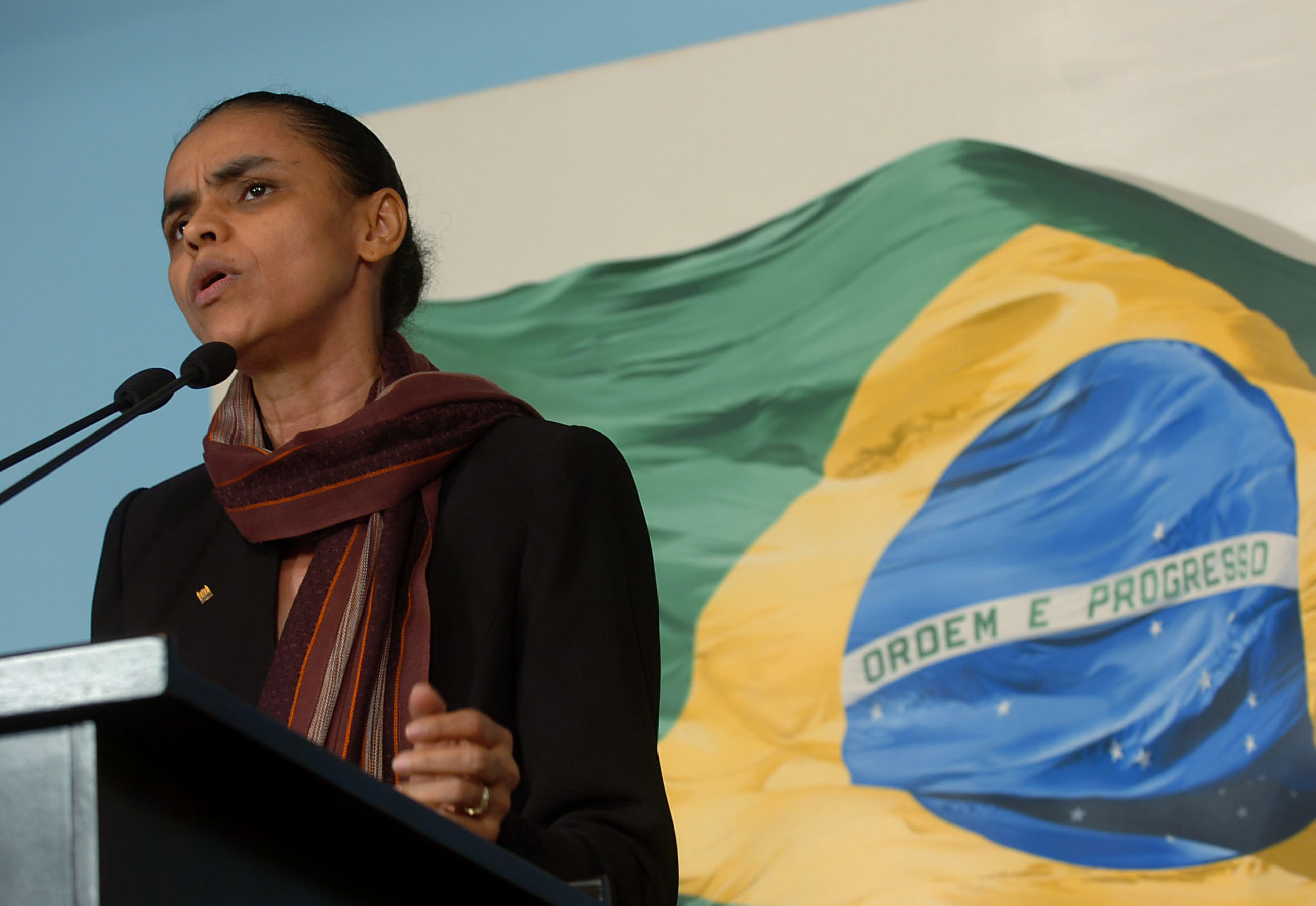
(http://noticias.gospelmais.com.br/marina-silva-novo-partido-candidata-presidente-2014-48157.html)
ENTREVISTA CONCEDIDA AOS PRINCIPAIS MEDIA
DO BRASIL POR FERNANDO GABEIRA:
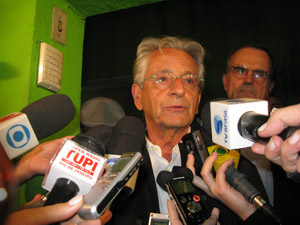
(http://g1.globo.com/especiais/eleicoes-2010/noticia/2010/10/apos-derrota-gabeira-deseja-boa-sorte-cabral.html)
"Gabeira elogia Lula e diz que presidente também incentiva reciclagem"
(http://oglobo.globo.com/eleicoes-2010/gabeira-elogia-lula-diz-que-presidente-tambem-incentiva-reciclagem-5005543, ONDE SE VÊ [foto: Marcelo Carnaval/O Globo]:
 (...) 10- Recente pesquisa de opinião realizada pelo IBOPE, parte brasileira da pesquisa global sobre o assunto, divulgada em abril do corrente ano, constatou que 54% dos brasileiros são contra o uso da energia nuclear para geração de eletricidade, resultado que se alinha com a opinião no mundo todo depois dos recentes eventos no Japão. De outra parte, 57% afirmaram 'estarem preocupados com um acidente nuclear no país' (...)"
(...) 10- Recente pesquisa de opinião realizada pelo IBOPE, parte brasileira da pesquisa global sobre o assunto, divulgada em abril do corrente ano, constatou que 54% dos brasileiros são contra o uso da energia nuclear para geração de eletricidade, resultado que se alinha com a opinião no mundo todo depois dos recentes eventos no Japão. De outra parte, 57% afirmaram 'estarem preocupados com um acidente nuclear no país' (...)"




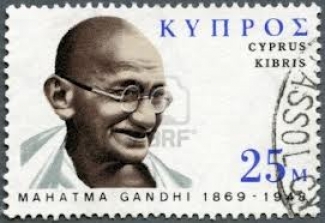







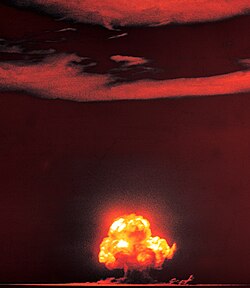























2.jpg)



